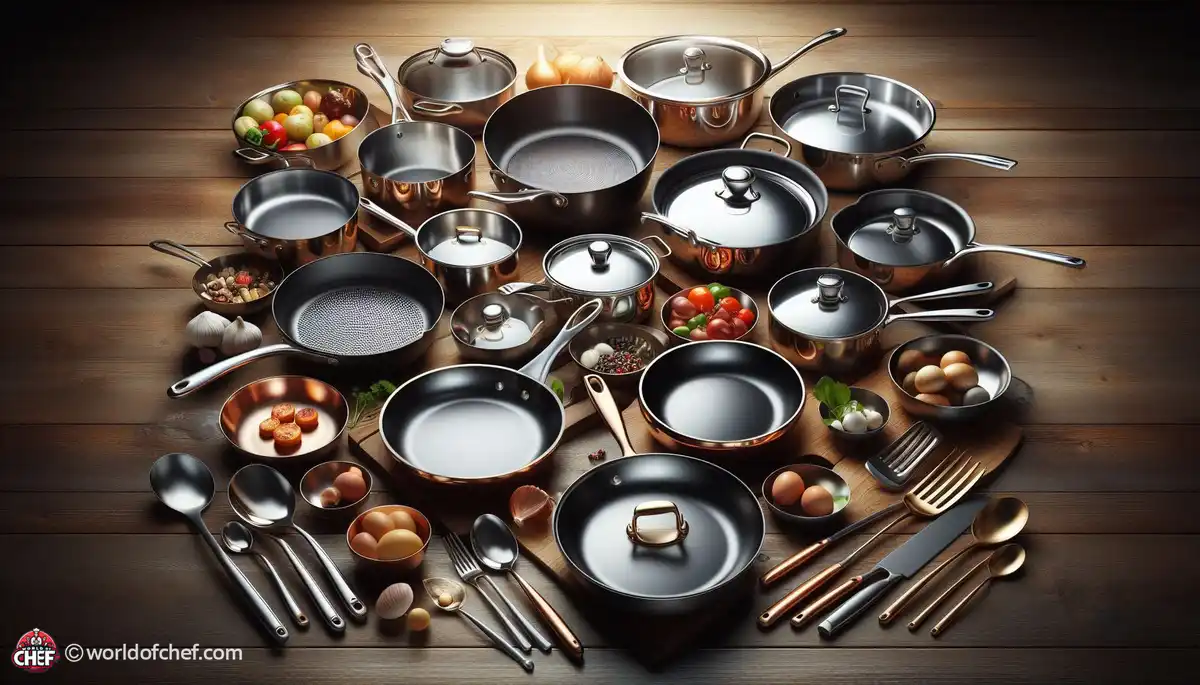
Simmering with Spices: Infusing Flavor into Your Dishes
Emery Donley - Oct 8, 2024 - 8 min read


The right pan makes all the difference when it comes to sautéing. This method of cooking food quickly in a small amount of oil over high heat requires a pan that can distribute heat evenly and efficiently. The choice of pan can affect the flavor, texture, and overall success of your dish.
There are many factors to consider when selecting the perfect pan for sautéing. Material, size, and design all contribute to how well a pan will perform on the stovetop. If you understand these factors, you can make a better-informed decision and have success every time with sautéing.
The most commonly found pan in home kitchens is the stainless steel sauté pan. Most people use this as if it were a tool of professionals. Those people who have used these pans can boast of their toughness because these pans can handle a great deal of temperature and are safe in ovens, hence they can be used for numerous purposes other than just sautéing.
One benefit of the non-stick sauté pan is that it provides one with convenience and easy to use, while the slippery coat ensures food does not stick on them. That's the best when delicate foods are involved, as is the case when Cooking Fish and eggs. Just pick one that's a quality product so that you can potentially enjoy it longer and cook more safely with it.
Cast iron sauté pans are appreciated for their consistency in retaining and distributing heat. Although they are somewhat more demanding in terms of maintenance compared to other pans, the result is just all worth it. Over time, a cast iron pan develops its natural non-stick surface, and for that reason, it would be an ideal sautéing pan for vegetables or any other meat.
Copper sauté pans are among the favorites of most professional chefs because of excellent heat conductivity. They warm fast and respond rapidly to changes in temperature, which lets you have full control of your cooking. They tend to be pricey and to keep them shiny, need polishing every now and then.
Carbon steel pans are similar to cast-iron pans in benefits, but they are lighter and more sensitive to the touch. These pans over time develop a natural non-stick patina and can be used for high heat techniques in sautéing or searing. If maintained well, a carbon steel pan can last an entire lifetime.
Preheating, regardless of the type of pan you will be using, is very important to ensure a successful sauté. It will be important to preheat the pan before adding any ingredient because that is when all ingredients will cook in less time and with uniform results, turning out that great golden brown color and yummy taste.
Use just enough oil while sautéing, as the amount can differ according to your pan and what you are sautéing. While the non-stick pan would require less oil, a stainless steel or cast-iron pan may require a bit more so that it wouldn't stick. Use sufficient amounts of oil until you attain your perfect amount for the recipe.
One of the most common sautéing mistakes is overcrowding the pan. Allow enough space between your ingredients to ensure proper heat circulation. Cook in batches if there isn't enough room to sauté everything at once.
Temperature control is crucial in sautéing. It is often done using high heat in the process to allow ingredients to cook quickly so that the flavors can develop, but occasionally lower the heat so that it does not burn. Observe your pan and adjust the heat accordingly while cooking.
Sautéing is a great opportunity to flavor your dishes. Try various aromatics such as garlic, onions, and herbs to add flavor to your food. Make sure you know when to add them so they do not burn and become bitter.
Choosing the right pan is crucial for sautéing success. Each type of pan is specific to its benefits and considerations, so it's pretty important to understand the different options available before deciding what to use. One could prefer the durability of stainless steel, the convenience of non-stick, or the retention of heat that the cast iron pans exhibit - there's sure to be a sauté pan out there for whatever a person's needs might be. By following these tips and experimenting with various pans and techniques, you will find how to make perfect delicious sautéed foods.

Emery Donley - Oct 8, 2024 - 8 min read

Russell Comeaux - Oct 8, 2024 - 8 min read

Walter Backus - Oct 7, 2024 - 8 min read

Samantha Thames - Oct 7, 2024 - 6 min read